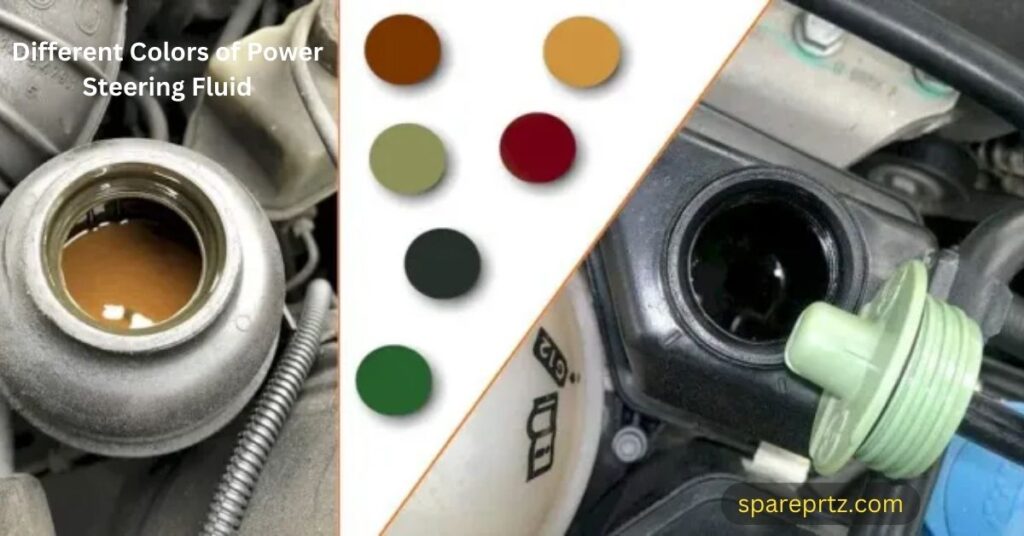What Causes Milky Power Steering Fluid – Reasons, Symptoms and Fixes
Are you the guy who feels difficulty turning the wheel? , When you checked your power steering system, you were shocked to see that the color of your power steering fluid had turned a milky color.
In manual cars, milky power steering fluid usually happens. There are many reasons for turning your steering fluid a milky color. One of the most common reasons is that the trapping of air in the steering pump causes foam and gives your steering fluid a milky color. Sometimes dilution of water with steering fluid is also the reason that may accrue due to any leakage.
But don’t panic in this situation, and change your fluid as soon as possible. But if it occurs again and again, then stay with us. We will explain the complete solution to this problem, its causes, symptoms, and fixes.
So let’s start the discussion from the root of the topic.
- 1 What Is a Power Steering Fluid?
- 2 What Color Should the Power Steering Fluid Be?
- 3 Different Colors of Power Steering Fluid?
- 4 Why Is My Power Steering Fluid Looks Milky:
- 5 2. Dilution of Water in Power steering fluid:
- 6 Symptoms of Milky Power Steering Fluid – Don’t Miss the Third One:
- 7 Fixes of milky power steering fluid:
- 8 Video Guide:
- 9 Conclusion:
- 10 Also Read:
What Is a Power Steering Fluid?
Power steering fluid is the fluid that is used in the hydraulic power steering system to steer the car efficiently. Power steering fluid lubricates all parts of the hydraulic power steering system, from the steering wheel to the front wheels.
What Color Should the Power Steering Fluid Be?
The most popular color of power steering fluid is red. Golden and amber-colored fluids are also common on the market. Different companies make different colors of power steering fluid. Your fluid’s color depends on which company’s fluid you are using.

Different Colors of Power Steering Fluid?
🔴Red: Red is a very common color. If your power steering color is red, you don’t have to worry about it. All is right here, as it is the color of the new power steering fluid.
🟡Yellow: If coolant leakage is mixed with the power steering fluid, your fluid will turn yellow. It’s not a good sign that you have taken immediate action.
🟤Brown or black: If your power steering fluid turns dark brown or black, it’s time to change it because it can damage the internal parts of the power steering system, such as hoses and bearings.
⚪Milky color: This is the most common problem with the power steering fluid. If you notice an air bubble or the milky color of the power steering, you should fix it as soon as possible.
Why Is My Power Steering Fluid Looks Milky:
If the power steering fluid is not clear or firm and looks milky, there is a problem. To resolve this issue, you first have to know its causes. According to my experience with the cars, the main reasons for turning the power steering fluid milky are given below.
1. Air Trapped in the Power Steering Fluid:
Sometimes air bubbles are trapped in the power steering pump. These bubbles are the major cause of the milky color of the power steering fluid. And make a foamy appearance of the fluid.
Air is trapped in the steering wheel due to some damaged internal parts, such as:
Bad Seals: The power steering system is a complex process consisting of many pipes and seals. With time, seals loosen, allowing air to enter the steering pump and causing the steering fluid to become milky.

Broken Pipes: Broken pipes allow the fluid to move from the power steering pump to all parts of the steering system to provide lubrication. Any damage to the steering pipe causes air to mix with fluid, and the results are in front of you.
Low Level of Power Steering Fluid: Leakage of the power steering fluid causes a low level of steering fluid. And produces a large space for air interruption. Air reacts with the steering fluid and causes severe damage.
2. Dilution of Water in Power steering fluid:
Mixing water with the power steering fluid also causes the fluid to become milky and foamy. Water also produces water bubbles in the steering fluid and reduces its efficiency in lubricating the parts of the steering system. Water dilution also occurs due to some damaged parts of the steering system.
Broken Power Steering Reservoir Cap: The power steering reservoir cap prevents water infiltration with the power steering fluid. But a cracked reservoir can not function, and water enters the power steering pump.
Symptoms of Milky Power Steering Fluid – Don’t Miss the Third One:
Knowing what happens when the power steering fluid becomes foamy and milky is important. Some symptoms are explained below so that you can recognize your exact problem.
Whining Noise:
Due to milky power steering fluid, whining noises are produced from the engine side. You must stop your car and check the power steering fluid if you hear any engine noise. But whining noise is not the exact symptom of milky steering fluid; it can also be produced due to low steering fluid levels.
Burning Smell:
Milky power steering fluid causes the engine. Due to overheating, the fluid in the steering pump produces a burning smell. If you smell any burning, you must check the steering fluid.
Difficulty in Turning the Steering Wheel:
Pure hydraulic power steering system works on steering fluid. If there is any problem with the steering fluid, it makes it difficult to steer the car. And you can lose control of the car, which will be dangerous. So, stop your car and check for any damage.
Leaking Fluid:
Leakage of power steering fluid can also be a symptom of milky power steering fluid. Inspect your car carefully to prevent further damage if you notice any stains under the car.
Fixes of milky power steering fluid:
According to my experience, if your power steering fluids turn milky, you should take serious action. Don’t try to drive your car in this situation.
You can fix your milky power steering fluid issue by following these steps.
1. Locate the Damaged Part:
First, locate the broken steering system part allowing air or water to enter the steering pump. It may be any part of the steering system, such as the steering pump, power steering lines, pipes, hoses, or seals.
To find the broken part, open the pump cap, wait for the bubbles to settle, and inspect the steering system.
2. Replace the damaged part:
Once you find the broken part, you have to replace it. Before replacing, drain out all the milky fluid.
Add new steering fluid:
When you replace the fluid, add the new fluid to the steering system according to your car’s specifications. Then test a drive to check whether the steering is working properly.
Video Guide:
Conclusion:
Contamination of power steering fluid with water or air can turn the power steering fluid into a milky color. It causes the steering to be struck at a place or not work properly, which can be life-threatening.
Regular maintenance of the steering system is required to prevent such types of issues. Try to change your power steering fluid every 45000-80000 miles for proper functioning.
Also Read:
- Will a Bad CV Axle Cause the Steering Wheel to Shake? Reasons, Symptoms, and Solution
- Why Steering Feels Lighter After New Tires: Comprehensive Guide
- Why Mercedes Gear Shifter On The Steering Wheel? 5 Reasons😲
- Why Is My Heated Steering Wheel Not Working? 5 Reasons And Fixes
- Why Do My Car Lights Dim When Turning the Steering Wheel?







